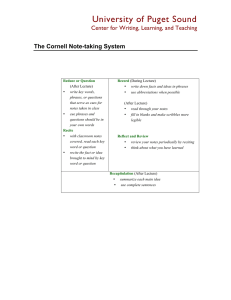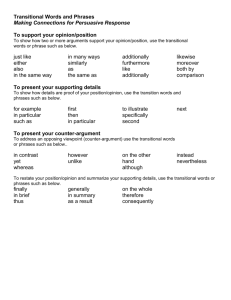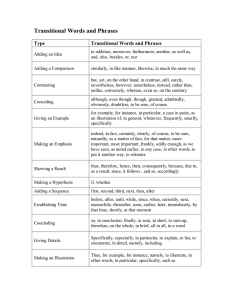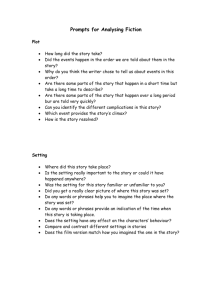Note-taking Tips 1. Be an effective listener.
advertisement
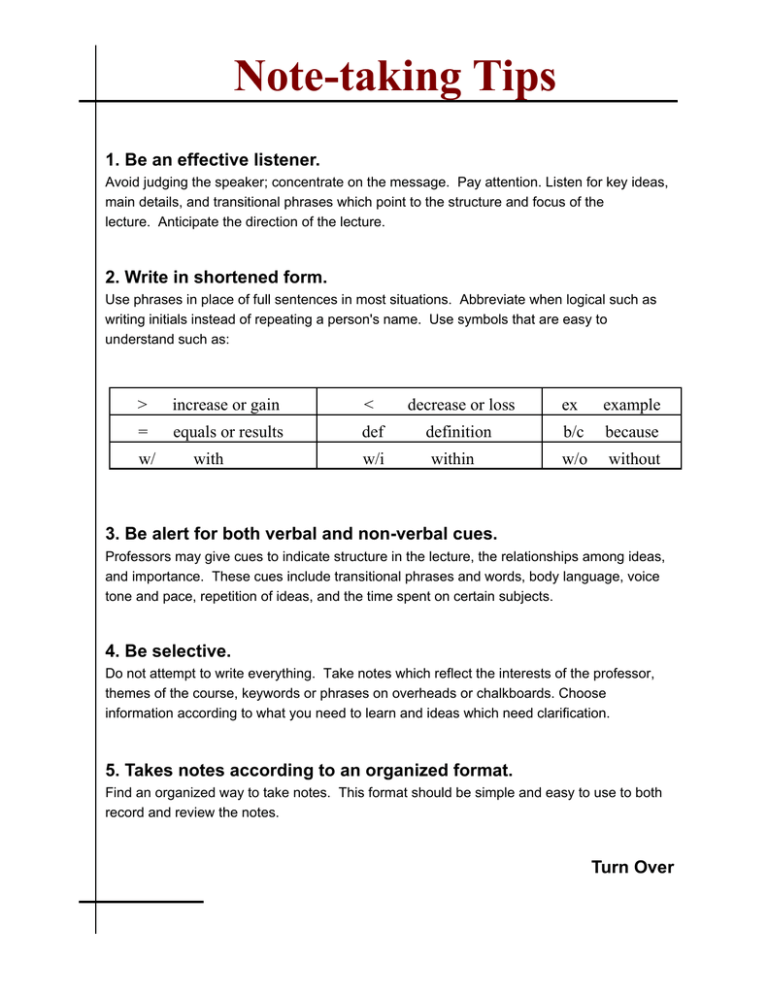
Note-taking Tips 1. Be an effective listener. Avoid judging the speaker; concentrate on the message. Pay attention. Listen for key ideas, main details, and transitional phrases which point to the structure and focus of the lecture. Anticipate the direction of the lecture. 2. Write in shortened form. Use phrases in place of full sentences in most situations. Abbreviate when logical such as writing initials instead of repeating a person's name. Use symbols that are easy to understand such as: > increase or gain < decrease or loss ex example = equals or results def definition b/c because w/o without w/ with w/i within 3. Be alert for both verbal and non-verbal cues. Professors may give cues to indicate structure in the lecture, the relationships among ideas, and importance. These cues include transitional phrases and words, body language, voice tone and pace, repetition of ideas, and the time spent on certain subjects. 4. Be selective. Do not attempt to write everything. Take notes which reflect the interests of the professor, themes of the course, keywords or phrases on overheads or chalkboards. Choose information according to what you need to learn and ideas which need clarification. 5. Takes notes according to an organized format. Find an organized way to take notes. This format should be simple and easy to use to both record and review the notes. Turn Over Note-taking Tips 6. Notes do NOT need to be perfect. Your notes are not a masterpiece. Do not worry about erasures or misspellings. Make sure your notes are neat enough to read with ease. If you feel you want your notes to be neater, do not use class time to perfect them. 7. Record lectures if needed. Tape recording a lecture allows a student to review ideas that might have been missed. If the discussion is being recorded, the student can concentrate more on what is written on the board or shown to the group. Check with the professor for permission to record. 8. Write on only 1 side of a page. This prevents "bleeding through" of information from the other side and allows for insertion of additional information on the back of a page if necessary at a later time. Most importantly, it saves time by limiting the amount of turning and adjusting required to record or review notes. 8. Review your notes regularly. Reread your notes often. Look for developing course themes and relationships between the ideas of successive lectures. Make additional notes as needed during this review to link the class discussion to assignments and/or readings.
